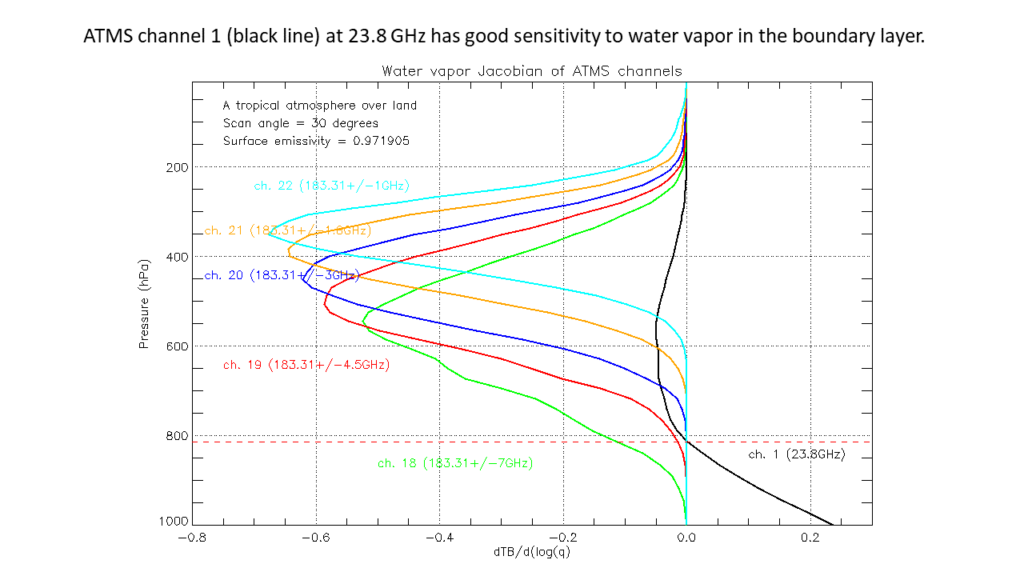
CISESS scientists Chris Grassotti and Yong-Keun Lee were coauthors of a paper published last week in the open access journal Remote Sensing.
The paper titled “How Can Microwave Observations at 23.8 GHz Help in Acquiring Water Vapor in the Atmosphere over Land?” examined the role of the microwave channel at 23.8 GHz in obtaining total integrated water vapor over land. The question arises because while single channel measurements from this channel are very effective in obtaining integrated water vapor over the ocean, they do not provide great sensitivity over land due to the much higher emissivity of land surfaces. Furthermore, when measurements from this channel are excluded from multichannel satellite retrieval algorithms, the accuracy of the total water vapor estimates is reduced.
The analysis showed, however, that over land the sensitivity of this single channel to lower tropospheric water vapor is still high, and when used in combination with measurements in other microwave frequencies that are sensitive to upper tropospheric water vapor, accurate estimates of total water vapor are still possible. The study was motivated by concerns about the rapid development and deployment of 5G telecommunications technology, which operates in frequencies very close to 23.8 GHz and which could pose a risk of interference in the passive microwave measurements.
Christopher Grassotti received a B.S. degree in earth and space science from the State University of New York at Stony Brook, Stony Brook, NY, USA, in 1982, tan M.S. degree in meteorology from the University of Wisconsin-Madison, Madison, WI, USA, in 1986, and an M.S. degree in viticulture and enology from AgroMontpellier, Montpellier, France, in 2007. From 1986 to 1991 and again from 1993 to 2005, he was a Research Associate, Senior Research Associate and Staff Scientist with Atmospheric and Environmental Research, Inc., Lexington, MA, USA. From 1991 to 1993, he was with the Atmospheric Environmental Service, Environment Canada, Dorval, QC, Canada. Since 2008, he has been with the National Oceanic and Atmospheric Administration, NOAA Center for Satellite Applications and Research, National Environmental Satellite, Data, and Information Service, College Park, MD, USA. He has been a Senior Faculty Specialist with ESSIC/CISESS since 2015.
Yong-Keun Lee is an Associate Research Scientist in the Earth System Science Interdisciplinary Center of the University of Maryland, College Park. He received a B.S. and a M.S. in Atmospheric Science from Seoul National University, and received a Ph.D. in Atmospheric Science from Texas A&M University. He is working on the NOAA Microwave Integrated Retrieval System (MiRS) which is the official operational satellite microwave retrieval algorithm currently being run on data from more than 7 different polar and non-polar orbiting satellites. His interests include remote sensing and data assimilation.
The paper’s other authors are NOAA STAR scientists Quanhua (Mark) Liu and Changyong Cao. To access the paper, click here: “How Can Microwave Observations at 23.8 GHz Help in Acquiring Water Vapor in the Atmosphere over Land?”





